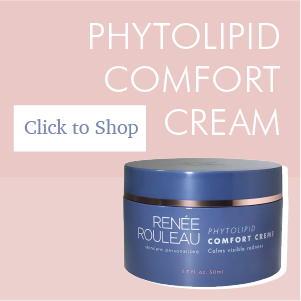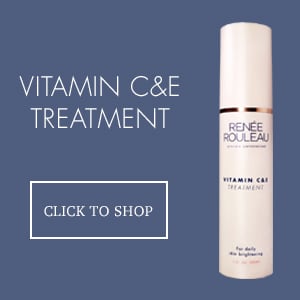Can I Use Vitamin C After A Chemical Peel
Updated 11/21/17. So you just got a chemical peel. Now you're left with dry, irritated, red, peeling skin—all perfectly common post-peel side effects. But now what? Here are my tips for chemical peel aftercare and managing the side effects without disrupting your skin's natural healing process.
Not all chemical peels are equal; the suggestions I share in this post are for light to light-medium peels. These are the types of peels I perform and they're the ones with which I have the most experiences. (You can read about the different depths of chemical peels here.) The skin care professional who performed your treatment should have given you detailed chemical peel aftercare instructions. If not, you might want to consider contacting him or her since every skin type is different, as is every peel.
With a chemical peel, the name says exactly what the skin is supposed to do—peel. Your esthetician or dermatologist applied a chemical solution (acid) to your face. The purpose was to remove the top layers of the skin along with any discolored cells within those layers. This process happens as the skin peels. While it's not always ideal to walk around with flaky skin, you have to be very mindful not to interfere with the process. Let Mother Nature do her thing. Simply put, you have to accept the peeling and avoid doing whatever you can to make it stop before its ready to. The goal is to keep the skin feeling moist, calm and comfortable.
Chemical Peel Aftercare Dos:
Do treat your skin gently.
Be sure to use a very, very light touch when massaging any type of product onto your skin. No aggressive rubbing at all. Some of the flaking cells are still attached to live cells, and you don't want to risk pulling anything off that isn't ready.
Do be extra careful when the skin is wet.
Water melts and softens dead skin, so it's very easy to rub off both dead and live cells when the skin is moist. This means avoid using washcloths or sonic cleansing brushes after a chemical peel. It's too risky.
Do wear sunscreen after a chemical peel.
Stating the obvious, but the skin is very vulnerable post-peel. UV light (even daylight on a cloudy day) is damaging your skin. If the skin is overly flaky and you're being mindful of not touching it too often, consider trying an SPF-infused powder. You can dust it on for a quick and easy, rub-free reapplication.
Do limit your time outdoors.
After a chemical peel, you want to hibernate as much as possible to keep your skin protected. The last things you want to expose your skin to are heat and UV light. It's already in such an inflamed state, you don't want to make it worse.
Do use products with soothing ingredients.
 You want to provide as much comfort to the skin as possible to ease redness and irritation. I have every one of my clients use a water-based gel mask (no more than once a day) if they feel like their skin is too uncomfortable. I suggest keeping it in the refrigerator to provide an extra cooling experience. I'll either recommend Bio Calm Repair Masque or Rapid Response Detox Masque, depending on the client's skin type. I will also have the client use a soothing moisturizer like Phytolipid Comfort Creme.
You want to provide as much comfort to the skin as possible to ease redness and irritation. I have every one of my clients use a water-based gel mask (no more than once a day) if they feel like their skin is too uncomfortable. I suggest keeping it in the refrigerator to provide an extra cooling experience. I'll either recommend Bio Calm Repair Masque or Rapid Response Detox Masque, depending on the client's skin type. I will also have the client use a soothing moisturizer like Phytolipid Comfort Creme.
After a chemical peel, do keep your skincare routine simple and gentle.
If you're wondering what to put on your face after a chemical peel, we recommend following this type of regimen, in this order.
- Wash your skin with a gentle, low-foaming, sulfate-free cleanser. Moisture Protecting Cleanser is a great gel-to-milk formula that won't leave the skin feeling dry.
- Use an essence but mist it on the skin. This is essentially an alcohol-free toner that removes impure tap water from the skin post-cleansing. This is also serum-infused to deliver excellent hydration. This provides additional comfort to irritated and peeled skin. Normally, you'd apply a toner or essence to a cotton pad then wipe it over the skin. Since post-peel you want to minimize rubbing, instead put the product into a spray bottle and mist it on the face. If you don't have a spray bottle, then pour into the palm of your hand and pat it on the face. Moisture Infusion Toner deeply hydrates the skin and can certainly be used year-round for skin types that need it. Like all toners, you should leave an essence damp on the skin so your serum that follows can seal in its hydration benefits.
- Apply a no-sting, acid-free antioxidant serum. Since the skin has been traumatized (which is the intention), free radical production is very high. You'll want to suppress some of that free radical activity by using a gentle vitamin C serum. Many vitamin C serums use pure ascorbic acid as the main ingredient. As the name implies, this is an acid, which is the last thing you want to add to the skin after a peel. Instead, look for vitamin C ingredients like Magnesium Ascorbyl Phosphate, Tetrahexyldecyl Ascorbate, Ascorbyl Methylsilanol Pectinate or Ascorbyl Palmitate. All of these are considered to be best for sensitive skin since they are stable, acid-free and don't cause a stinging sensation. (Check out this cool experiment that I did using a vitamin C serum on an apple!)
- Apply moisturizer. If it's during the day, you'll want a moisturizer with sunscreen. (One with Zinc Oxide is ideal as it will be more soothing to the skin.) In the evening, you'll want to use a non-sunscreen moisturizer for your skin type. Be sure to use a light touch when applying.
Do use a natural skin brightener.
 Since chemical peels can stimulate melanin activity, you don't want to end up with post-inflammatory hyperpigmentation, a condition in which you develop brown spots or patches post-peel (common in skin that already struggles with discoloration/brown spots). I recommend that my clients use a vitamin C serum, as mentioned above since vitamin C works beautifully to calm melanin cells.
Since chemical peels can stimulate melanin activity, you don't want to end up with post-inflammatory hyperpigmentation, a condition in which you develop brown spots or patches post-peel (common in skin that already struggles with discoloration/brown spots). I recommend that my clients use a vitamin C serum, as mentioned above since vitamin C works beautifully to calm melanin cells.
Chemical Peel Aftercare Don'ts:
Don't pick or pull at the flaky skin!
The whole purpose of a chemical peel is to lift away surface dry, damaged cell layers and reveal younger-looking, healthy new cells. But to do this, the skin has to shed. That's the part that people dislike the most. Picking off dry, flaky skin when it may not be ready to come off can result in scarring and unnecessary redness. You really have to leave it alone. Again, let Mother Nature her do her job.
Don't use a washcloth, facial scrub or sonic cleansing brush.
As mentioned above, dead, flaky skin softens up when exposed to water. It can be very tempting to want to rub away that dryness with a washcloth, facial scrub or Clarisonic. Please don't use any of these. Should any new cells come along with it (which they will!), you'll wind up with scabs all over your face. I've seen it happen time and time again. This certainly defeats any benefits from getting the peel in the first place.
Don't over-moisturize after a chemical peel.
To compensate for post-peeling dryness, don't over-moisturize. When the skin is peeling and flaky, it's normal to want to continually apply a skin oil or heavy moisturizer to comfort and alleviate dryness. While you DO want to keep the skin moist because moisturizers can aid healing and you certainly don't want the skin to crack, it's important to know that the whole purpose of a chemical peel is to peel. The less rubbing, massaging and tugging on the skin you do, the better. Just use a comforting moisturizer and let the skin do what it wants to do—shed. If you are going out and want to camouflage some of the flakiness, patting a few drops of a treatment oil on the skin like Pro Remedy Oil will help it be less noticeable.
Don't exfoliate with acids or enzymes.
It is so important to not remove the peeling skin before its time. You must let the skin shed naturally on its schedule, not on yours. Acids and enzymes, whether in a cleanser, toner, serum, mask or moisturizer, will only irritate the skin further and possibly burn and temporarily scar the skin. While I love exfoliation, and you'll want to get back to that two weeks after a peel to keep up the results, this is not the time.
Don't eat highly acidic foods.
Just as you don't want to apply topical acids to the skin, you also don't want acidic foods getting on the skin. When things like tomato sauce, oranges and salsa touch the face, they can lower the pH of the skin to the point of causing serious irritation. I've seen a lot of people get burns/rashes on the sides of their mouth post-peel from eating pizza. It got all over the corners of their mouth without them even realizing it was happening! When you have a peel, your moisture barrier is in a very damaged state and acts extremely sensitive and particularly. Since the mouth area is the place where you'll see the most amount of peeling due to facial movements from talking and yawning, this area can be very reactive.
Don't sweat too much after a chemical peel.
Especially at the height of the peeling, your protective barrier is very damaged. When you sweat while working out, the salt can cause a stinging sensation which may further the irritation.
Don't use any type of retinol or prescription retinoids.
These types of products work to stimulate cell turnover from deep. This is definitely great for the skin, but it's what's already occurring because of the peel. Like acids, you'll want to use these once your skin heals, but not quite yet.
So there you have it. Tips from my extensive experience to minimize post-peel downtime so you can get back to your regularly scheduled life—but with new, fresher-looking skin! Lastly, here's how you can give your skin a peel at home.
Which skin care products are best for you? See our nine skin types or take the Skin Type Quiz and get products recommended.
Need expert advice from a licensed esthetician? Schedule a virtual consultation to get customized advice in person, over the phone or online via Skype or FaceTime.
For more expert advice check out the blog. Also, sign up for our skin tip e-newsletter, follow Renée Rouleau on Twitter and Instagram and join the discussion on our Facebook page. You'll be your own skin care expert in no time. Get the #ReneeRouleauGlow!
![]()
Celebrity Esthetician & Skincare Expert
As an esthetician trained in cosmetic chemistry, Renée Rouleau has spent 30 years researching skin, educating her audience, and building an award-winning line of products. Trusted by celebrities, editors, bloggers, and skincare obsessives around the globe, her vast real-world knowledge and constant research are why Marie Claire calls her "the most passionate skin practitioner we know."
Can I Use Vitamin C After A Chemical Peel
Source: https://blog.reneerouleau.com/how-to-care-for-your-skin-after-a-chemical-peel/

0 Komentar